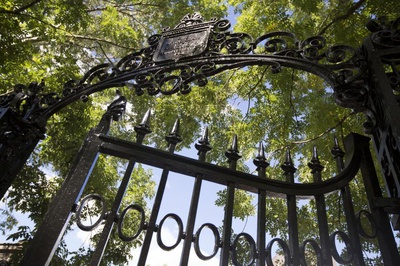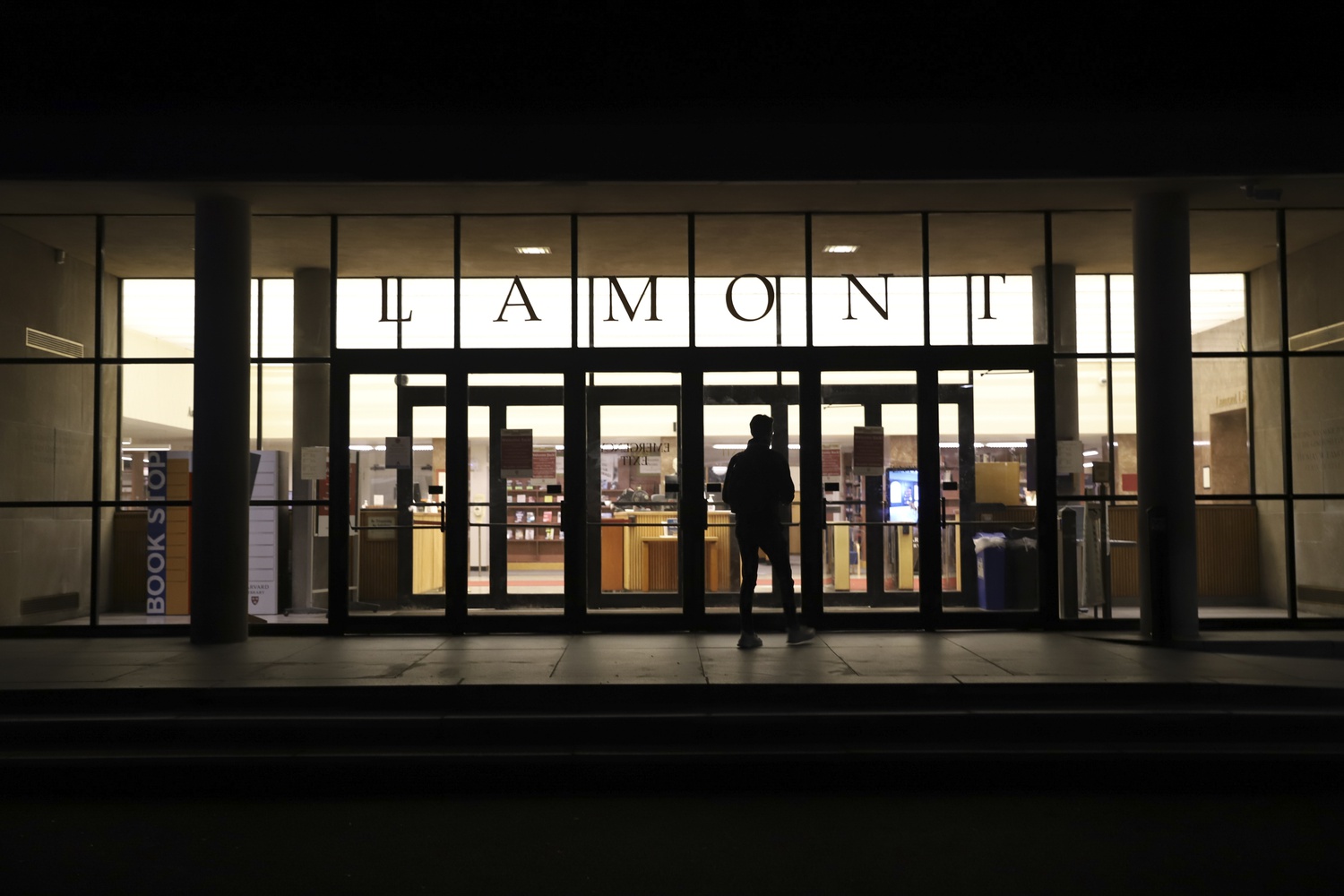
News
Nearly 200 Harvard Affiliates Rally on Widener Steps To Protest Arrest of Columbia Student

News
CPS Will Increase Staffing At Schools Receiving Kennedy-Longfellow Students

News
‘Feels Like Christmas’: Freshmen Revel in Annual Housing Day Festivities

News
Susan Wolf Delivers 2025 Mala Soloman Kamm Lecture in Ethics

News
Harvard Law School Students Pass Referendum Urging University To Divest From Israel
I’m Begging Harvard Not to Ruin Lamont for Me
At the end of last academic year, the Harvard Library system released a feasibility study for its “dream renovation” of the four Harvard Yard libraries — Widener, Lamont, Houghton, and Pusey — with hopes to complete the updates before Harvard’s 400th anniversary in 2036.
Though the library system’s goals of increasing interdisciplinary scholarship and interaction with its holdings are admirable, the renovation plan misunderstands student needs and risks ruining the character of the individual Yard libraries.
The plans for the Lamont update specifically are awash in terms as overused as they are vacuous: “reimagining” various rooms, creating a “vertically integrated” space. The plan also proposes creating a “book arts studio” (complete with printing press!), taking possession of Harvard’s Fine Arts Library and Collection (currently located in the Littauer Center), and gutting the basement to provide space for a secure reading room for handling sensitive materials from its collections.
Lamont was my home-away-from-home freshman year. I was enticed by the 24-hour schedule and the building’s quieter-as-you-ascend floor scheme. One moment, I could enjoy the unbridled sociality of the basement; the next, I could study in the deafening silence of the third floor. I became a Farnsworth Room regular and took up residence at the same desk almost every day during my second semester.
After renovations, I fear that ritual will be a thing of the past. The proposed changes put nice-to-have bells and whistles above the decidedly unsexy necessity of everyday space for undergraduate study. These heavy-handed and unnecessary changes appear likely to significantly decrease the library’s capacity — a daily inconvenience that will become untenable during midterms and finals when Lamont is packed to the gills.
This is not to say that some of the proposed additions, like a student-accessible bookbindery, are bad ideas per se. But why not give students the chance to engage with book arts in Harvard’s dedicated document preservation center, the labyrinth of preservation labs under Widener, or somewhere else with the preexisting infrastructure? Indeed, I worry about a kind of ‘feature creep,’ in which the library’s makeover serves as an excuse to introduce ultimately unneeded capacities into what should be a building dedicated to study.
Lamont’s physical infrastructure is decrepit and in obvious need of a renovation, but the renovation planners should remember that so-called “Lamonsters” don’t frequent the library to admire novelty cone-shaped spinning chairs. Instead, they ought to design for the demographic of students Lamont actually serves — those who prefer a cozier, quieter, more lived-in study environment.
Despite my disappointment with the possible fate of Lamont, starry-eyed proposals like this one do not surprise me in the slightest. Indeed, the feasibility study is a clear symptom of a phenomenon plaguing the Faculty of Arts and Sciences: A kind of makeover Midas touch, whereby every renovated space gets the same ‘modern’ (soulless) and ‘innovative’ (ill-conceived) facelift.
A brief trawl through the FAS’s page of completed space makeovers reveals a monotonous uniformity: little more than the enviro-corporate-pseudo-next-gen pastiche of the Smith Campus Center and Cabot Science Library.
It’s for this reason that — though the feasibility study reports that Lamont will maintain its mid-century modern design — I can’t help but be skeptical.
As the quadricentennial hurtles toward us, Harvard’s senior planners and administration would do well to remember the campus we built and lost over those 400 years: Gore Hall, the soaring gothic library torn down to make way for Widener; Hunt Hall, the original home of the Art Museum, demolished to make way for Canaday; Appleton Chapel, the Yard’s house of worship before Memorial Church.
Though my sadness at these demolitions is tempered by the knowledge they were ultimately necessary to accommodate a growing Harvard, destroying Lamont as it stands today is not. Harvard and its library system ought to remember that.
Jack P. Flanigan ’27, a Crimson Editorial editor, is a Social Studies concentrator in Pforzheimer House.
Want to keep up with breaking news? Subscribe to our email newsletter.
Most Read
- Harvard Dismisses Leaders of Center for Middle Eastern Studies
- 2 Years After Affirmative Action Ruling, Harvard Admits Class of 2029 Without Releasing Data
- Russian HMS Researcher Detained at Louisiana ICE Facility After Visa Revocation
- Harvard Agrees to a 1-Year $6 Million PILOT Agreement With the City of Cambridge
- More Than 600 Harvard Faculty Urge Governing Boards To Resist Demands From Trump
From Our Advertisers

Over 300+ courses at prestigious colleges and universities in the US and UK are at your disposal.

With innovative financial tools combined with financial education, Collegiate empowers students to take control of their finances and build confidence in their money management skills.

Serve as a proctor for Harvard Summer School (HSS) students, either in the Secondary School Program (SSP), General Program (GP), or Pre-College Program.

With an increasingly competitive Law School admissions process, it's important to understand what makes an applicant stand out.

Welcome to your one-stop gifting destination for men and women—it's like your neighborhood holiday shop, but way cooler.

Admit Expert is a premium MBA admissions consulting company, helping candidates secure admission to top B-schools across the globe with significant scholarships.

